Mothers’ knowledge and practices about children immunization in Sri Lanka
Cunoştinţele şi practicile mamelor din Sri Lanka privind imunizarea copiilor
Abstract
Vaccination of children is the responsibility of parents, as immunization schedule is issued by the epidemiology unit of the Ministry of Health from Sri Lanka. There are two types of measures when it comes to immunization, knowledge and practice. The focus of this study is to identify knowledge and practices of mothers towards immunization attended to the Sirimawo Bandaranayke Specialized Children Hospital, Peradeniya, Sri Lanka. The study was conducted between 8 and 29 January 2021. The data were collected using self-administered questionnaires which consisted of three parts, comprising demographical data, mother’s knowledge regarding immunization, and mothers’ practices regarding immunization. The demographic characteristics were represented by age, civil status, educational level, employment status, language and family income. This was a quantitative non-experimental descriptive study. One hundred and thirty-six mothers were selected as the sample size. Findings were analyzed by using Microsoft Excel. Regarding questionnaire marks, 44% of the mothers had marks between 60 and 100 on immunization knowledge, 38% of mothers had marks between 30 and 59, and 18% of mothers had marks between 0 and 29. This study revealed the poor practice levels of mothers regarding the immunization of children. Thus, 24% of mothers had marks between 60 and 100, 30% of mothers had marks between 30 and 59, and 46% of mothers had marks between 0 and 29. This fact reflects that mothers need more educational training on immunization, even in well-developed cities from Sri Lanka.Keywords
immunizationchildrenknowledgepracticeRezumat
Vaccinarea copiilor este responsabilitatea părinţilor, iar programul de imunizare este elaborat de departamentul epidemiologic al Ministerului Sănătăţii din Sri Lanka. Există două tipuri de măsuri referitoare la imunizare, privind cunoaşterea şi practica. Scopul acestui studiu este de a identifica gradul de cunoaştere şi practicile privind imunizarea ale mamelor care s-au prezentat la Spitalul de Copii „Sirimawo Bandaranayke”, din Peradeniya, Sri Lanka. Studiul a fost elaborat între 8 şi 29 ianuarie 2021. Datele au fost colectate prin intermediul unui chestionar autoadministrat, structurat în trei părţi, conţinând date demografice, date referitoare la cunoştinţele mamelor privind imunizarea şi date referitoare la practicile acestora privind vaccinarea. Caracteristicile demografice au fost reprezentate de vârstă, stare civilă, nivelul educaţional, statutul profesional, limbă şi venitul familiei. Acesta este un studiu cantitativ, nonexperimental şi descriptiv. Eşantionul a fost reprezentat de un număr de 136 de mame, selectate pentru a participa la studiu. Rezultatele au fost analizate utilizând programul Microsoft Excel. În privinţa notelor în urma administrării chestionarelor, 44% dintre mame au avut note între 60 şi 100 privind cunoştinţele despre imunizare, 38% dintre mame au avut note între 30 şi 59 şi 18% au avut note între 0 şi 29. De asemenea, acest studiu a evidenţiat nivelul scăzut al mamelor referitor la practicile privind imunizarea copiilor, 24% dintre mame având note între 60 şi 100, 30% dintre mame având note între 30 şi 59, iar 46% având note între 0 şi 29. Acest fapt dezvăluie că mamele au nevoie de mai mult training educaţional privind imunizarea, chiar şi în oraşe dezvoltate din Sri Lanka.Cuvinte Cheie
imunizarecopiicunoştinţepracticiIntroduction
Vaccination is one of the most cost-effective public health tools to prevent infectious diseases(8). According to studies, 1.7 million children died from vaccine-preventable diseases(8). Around 19.3 million children were incompletely vaccinated. Child immunization is the responsibility of parents to reduce child mortality and morbidity from vaccine-preventable diseases(12). Vaccination of the children is the responsibility of parents, as immunization schedule is issued by the Epidemiology Unit of the Ministry of Health from Sri Lanka. The World Health Organization (WHO) defined immunization as the process whereby a person is made immune or resistant to an infectious disease, typically by the administration of a vaccine. One of the best ways to protect children is make sure they have all their vaccines. There are many important reasons to vaccinate children. Immunization can save lives and, implicitly, families, time and money(3), and also suffering and expenses for the healthcare system. Immunization protects future generations(9). Vaccines are only given to children after a long and careful review by scientists, doctors and healthcare professionals(7). Mothers’ knowledge and practices about vaccination thus become one of the main tools to reduce the incidence of vaccine-preventable diseases, reducing childhood mortality. The main focus of this report is to identify knowledge and practices of mothers regarding the vaccination of their children.
Knowledge of vaccine coverage and reasons for poor uptake are essential for the achievement of vaccination coverage. Vaccine-preventable diseases are considered one of the main causes of sickness and deaths among children all over the world. Most of the deaths occurred in the developing countries(4). Previous studies mentioned that mothers’ knowledge and practice help to develop positive attitudes towards immunization(13). It helps reduce the burden of dreadful infectious diseases which are best controlled by vaccination(9). The World Health Organization reports that 25 preventable infections licensed vaccines are currently available. In a national family health survey (NFHS-3), 60 children, with ages between 12 and 23 months old, were fully vaccinated against six major childhood illnesses. However, most children were at least partially vaccinated and 9% had received no vaccination at all.
There is much research showing that the mother’s knowledge on immunization is very good, but a low percentage of them have not enough knowledge about routine vaccination schedule. But there are a few research findings available which reveal that some mothers complete their children’s immunization timely, while others do not complete it or is delayed. Most research findings are from developing countries. A retrospective quantitative cross-sectional survey design of 64 mothers was conducted to explore maternal education and immunization(2). A cross-sectional descriptive study was focused on knowledge attitude and practices of mothers towards immunization of infants in health centers(1). This study describes that mother’s knowledge and practices are key tools to decrease dropout rates and to prevent or control infectious diseases. Another observational cross-sectional study evaluated knowledges and attitudes towards childhood immunization among mothers attending antenatal clinics(11).
A quantitative descriptive cross-sectional study was conducted by Gebrecherkos et al.(5), regarding knowledge attitudes and practices of mothers with children younger than 5 years old towards vaccination. In Sri Lanka, the extended program for immunization was established in 1978 by the Ministry of Health. It has made excellent progress over the past 30 years, by achieving high immunization coverage and, also, disease control. In Sri Lanka, research studies on mothers’ knowledge and practices about children immunization were not found. This study focuses on exploring knowledge and practices of mothers regarding vaccination at the Sirimawo Bandaranayake Specialized Children Hospital, Peradeniya.
Methodology
Research settings
The participants were recruited from the vaccination clinic conducted by Visiting Physicians Outpatients Department (VP OPD) at the Sirimavo Bandaranayaka Specialized Children Hospital in Peradeniya (SBSCH), Sri Lanka. The vaccination clinic is situated on the first floor of the Outpatient Department (OPD) which is held on every Friday from 7 a.m. to 12 p.m. Mothers are registered at the ward before vaccination.
Population and sample
This hospital and unit are chosen because they are second best children hospital in Sri Lanka. Approximately 75 to 100 children were vaccinated daily and around 300 children were vaccinated monthly. The participants of the vaccination clinic included children with congenital heart diseases, a previous history of vaccine reactions, a history of allergies, referrals from Medical Officer of Health (MOH) areas, and children of medical staff. Therefore, it was very helpful to collect enough samples for our research and our all-group members working in SBSCH helped us for conducting the research successfully. The participants were selected using purposive total population sample method.
Sampling technique
The sample technique is represented by convenience non-probability sample method. The study collected data from 136 mothers by considering the following sample technique:
n = z2*p*(1 - p)/e2
n – sample size
z = 1.96; critical value of specified confidence, at 95% confidence interval
p – probable estimate of proportion of a given characteristic
p = proportion (expressed as a decimal) = 0.5
N – population size = 136
e – margin of error = 0.05
z = 1.96; p = 0.5; N = 235; e = 0.05
n = [1.962 * 0.5 * (1 - 0.5)/0.052] / [1 + (1.962 * 0.5 * (1 - 0.5)/(0.052 * 235))]
n ≈ 136
The sample size (with finite population correction) is equal to 136.
Data collection method and tools
In this study, data were collected by a self-administered questionnaire developed by researchers and corrected by a consultant in pediatrician of the hospital. The questionnaire was tested by using 10 mothers for identifying the problems and weaknesses. After corrections were made, the questionnaire was retrained and validated. To answer the research question about the knowledge of mothers regarding changes following immunization, the researcher wished to use a self-administered questionnaire to measure, observe and record data as an interviewer. This study questionnaire had three sections. The first section included demographic data such as age and education level, while the second section included questions regarding mothers’ knowledge on vaccination. The final section discussed aspects regarding mothers’ practices regarding vaccination. The questionnaire was distributed in Sinhala, English and Tamil medium. The questionnaire used closed-ended questions to ensure that the subjects could remain anonymous.
Ethical clearance
In this study, we were dealing with mothers who visited the vaccination clinic in Sirimarvo Bandaranayake Children Hospital. Ethical approval was taken by the ethical review committee of the Faculty of Medicine from the University of Peraeniya. Permission of the director, special grade nursing officer, nursing in charge and consultant of vaccination clinic was received for performing the research. The participants had the right to participate or refuse the study and had the right to leave the study at any time without giving any intension. The researcher ensured not to harm physically, mental or emotionally the participants, intentionally or unintentionally. Contact details of researchers and principal investigators were given. The participants were given the opportunity to clarify the doubts regarding the research before and during the study.
Data analysis
The data from the completed questionnaire were entered into an Excel sheet by investigators to determine the sociodemographic characteristics of the study sample. The data were presented in percentages. The study did not present multiple comparisons in the findings because its primary aim was to describe the knowledge and practices of mothers regarding their children’s immunization. F-test is a statistical technique used to check if the means of two or more groups are significantly different from each other. F-test checks the impact of one or more factors by comparing the means of different samples. F-test was used to compare between language and knowledge or practice.
Results
The study included 136 participants, only females. The sociodemographic characteristics of the lot are shown in Table 1. The results were reported in terms of describing characteristics of the study sample. When analyzing the study sample, sociodemographic characteristics were identified.
The demographic data showed that most of the parents (mothers) were in the 31-35 years old age group, and represented 29.41% of the sample. Mothers who came with their children were mostly married, while 5.9% were unmarried. The evaluation of the educational level of the mothers who showed up at the clinic revealed that they had an increased level of education in a percentage of 45%. Very low percentages reflect no formal education. Most of the mothers who came to vaccinate their children were employed (63.23%). Most of them belonged to poor earning category and their monthly income was 3600-7500 Rupees/monthly, which is equivalent to 10-20$ per month. Language and communication skills of the parents from Sinhala language were considerably high (91.1%), while Dialect Tamil and English represented an obstacle in communication.
In this study, most of the mothers (44%) had a good knowledge score about immunization, 38% had a medium knowledge, and 18% had a low knowledge score (Figure 1).
But when we consider the practice of mothers, most of them (46%) had a low practice (0-29) about immunization, 30% had a medium practice (30-59), and 24% of them had a good practice (60-100) of immunization (Figure 2).
Additionally, in this study we found a positive statistically significance correlation between mothers’ age, educational level, occupation and income, with knowledge and practice. There were no correlations between mothers’ knowledge and practices with civil status and language (Table 2 and Table 3).
Discussion
Immunization has saved the lives of more children than any other medical intervention in the last 50 years. Vaccines are safe and are one of the most cost-effective ways to save and improve the life of children worldwide. However, large number of children still have no basic immunization, leaving them with a permanent disability. Mothers’ knowledge and practices about vaccination become one of the main tools to reduce the incidence of vaccine-preventable diseases, reducing childhood mortality.
This study results revealed that 44% of mothers had a good knowledge score related to child immunization and only 24% of mothers had a good practice score. In this study, 44% of mothers had good knowledge, 38% of mothers had moderate knowledge, and 18% of mothers had a low knowledge about immunization. The study included mothers with ages between 16 and 44 years old. The study showed that there was a close correlation between the degree of knowledge and the mothers’ age. Regarding the educational level, 98% of mothers attended school and 85% of them completed the elementary level. Only 2.94% of mothers had never gone to school. From this study, it turned out that there is a correlation between the knowledge of the mothers regarding the immunization and their degree of education. Also, we observed that the majority of the mothers were employed (63.23%) and 36.76% of the mothers were unemployed. Regarding the association between employed mothers and knowledge, it had a significant effect on this study.
According to the association between mothers’ knowledge and income, there was a positive strong correlation between knowledge and the income of mothers. There was no significant effect observed between the civil status of the mother and her knowledge of immunization, as well as between the mother’s language and her knowledge of immunization. This study revealed that the majority of mothers (46%) had a law practice level, 30% of mothers had a moderate practice level, and a minority of the study population had a good practice level (24%).
The study showed that elder mothers had a good practice level and there was a very strong positive correlation between age and practice level. The study revealed that younger mothers had poor practices of immunization. The majority of the study population were educated. The educated mothers had a good practice level. There was a strong positive correlation between practice and education. According to the study findings, the employed mothers had a better practice level than the unemployed mothers. There was a significant effect on practices of employed mothers. The results revealed that 44% of mothers had a good knowledge about immunization and 46% of them had a low practice level. The result of the current study may be due to the low level of awareness and the lack of educational program in rural areas. These results are in accordance with other published international studies. This study was performed at the vaccination clinic of the Sirimavo Bandaranayke Specialized Children Hospital, Peradeniya, in order to assess knowledge and practices of mothers about child immunization. According to the association between mothers’ education and knowledge and practices about vaccinations, this study showed that there was a statistically significant relation between education and knowledge and practice of immunization. This finding was in line with the result from the Monsura University, Egypt, which assessed knowledge, attitude and practice of mother towards children obligatory vaccination. That study showed that there was a statistically significant relation between education and practice.
This study revealed positive strong correlations between the practices and the income of mothers. Higher incomes associate with good practice, and low incomes lead to significant poor practice levels. In terms of the relationship between knowledge, civil status, language, and practice level, there was no significant effect observed based on the mother’s marital status or language proficiency. Regarding the association between mothers’ age, on one hand, and knowledge and practices, on the other hand, the current study reveals positive correlations. These finding are in line with the results revealed at the Monsoura University, Egypt, that assessed the attitude and practices of mothers about children’s obligatory vaccination, and also compatible to the results from a study in Karachchi, Pakistan, which assessed immunization knowledge and practice among mothers attending a pediatric clinic.
This study revealed good knowledge and limited practice of mothers. The other study carried out in Mansoura University, Egypt, regarding knowledge, attitudes and practice of mothers towards children’s obligatory vaccination, revealed an inadequate knowledge and limited practices. The study was done at the Index Medical College and Hospital Research Central in Indore, India, and reported its findings. The knowledge of mothers about vaccination was inadequate, but the attitude toward immunization was good. Moreover, another study was done in Karachi, Pakistan, on immunization knowledge and practices among mothers attending a pediatric clinic in Karachi, and it revealed that the mothers’ knowledge about the extended program on immunization (EPI) and vaccination schedule was poor.
Conclusions
This study was performed in order to assess knowledge and describe practices regarding child immunization among mothers at the vaccination clinic from Sirimawo Bandaranayke Specialized Children Hospital, Peradeniya, Sri Lanka. Most of the mothers (44%) had a good knowledge of immunization, 38% of mothers had a moderate knowledge, and 18% of mothers had a low knowledge about immunization. Considering the demographic data, as the age increased, their knowledge also increased. Knowledge does not depend on civil status. As the educational level increased, their knowledge of immunization also increased. Employed mothers had a better knowledge than unemployed mothers. As the income increased, their knowledge also increased, but language did not affect the mothers’ knowledge level about immunization. Considering the study findings, 46% of the mothers had a law practice level and 30% of the mothers had a medium level of practice about immunization. Only 24% of mothers had a good practice level. According to the findings, as the age increased, their practice level improved. The practice level did not depend on civil status such as knowledge. When the education level has increased, their practices have increased strongly. The employed mothers had better practices than unemployed mother. When the mothers had high incomes, their practices also increased strongly. Language did not affect the practice level of mothers. In conclusion, mothers had a good knowledge about immunization and poor practices regarding immunization. Thus, it is important to improve good practices among mothers, as these can improve children’s health and well-being.
Limitations of the study
The study was conducted in the vaccination clinic of the SBSCH Peradeniya, in the Central Province of Sri Lanka. The findings of the study are not applicable for similar communities in Sri Lanka. There were some limitations encountered by investigators in collecting data due to the COVID-19 pandemic. The restrictions of gathering people in the vaccination clinic in SBSCH limited the number of visitors. Patient’s registration and vaccination were done in two separated areas. The participants were divided into groups of 10 people, for social isolation. Only the mothers and their children could enter hospital premises. In this situation, the investigators faced difficulties in collecting data, the total number of participants in the vaccination clinic was more reduced than expected, and the investigators collected data for approximately one and a half month to saturate the sample size. The reduced number of participants due to pandemic caused the limitation of meeting the inclusive criteria.
Implication for nursing
The findings of this study will be useful for health education and for the promotion of health planning in vaccination clinics and in central province. The analyzed data can be used for teaching sessions to improve mothers’ knowledges and practices about immunization in children. Each teaching session conducted used leaflets and posters. The leaflets given by investigators can be used as a guide for participants to improve knowledge and practices. The implications were given on various aspects, such as nursing practices, education, administration and nursing research. Knowledge and the practice level of vaccination were different from one mother to another. Therefore, nurses working in vaccination clinics should have updated knowledge and practices regarding vaccination. Nurses should organize health education programs to build up the knowledge of schedule, post-vaccination complications and improve the good practice levels of mothers. Most importantly, nurses should take appropriate actions to complete all vaccinations for children as planned in the vaccination schedule and reduce post-vaccination complications. The nurse educator and the field nursing officer should emphasize health education for mothers in prenatal clinics or in postnatal clinics, to improve mothers’ basic knowledge and the practice level of vaccination. In hospital vaccination clinics, the education session for target groups, conducted time to time, using leaflets and posters, will help mothers to gain knowledge and practice. The findings of this study can be used to develop more nursing research and studies on mothers’ knowledge and practice level about child vaccination and for other related advanced studies. These findings can be used for administrative purposes, to enhance mothers’ knowledge, their practices levels using health education sessions, planning child health development record books, booklets and leaflets, distributed through Medical Officer of Health (MOH) and in vaccination clinics. Field nursing officers to target groups will help for a better vaccination knowledge and practices among mothers.
Recommendation
According to this study, as the age increases, the education levels of mothers with good knowledge and practices in the immunization of their child increase. Very young mothers (teenage mothers) and low educated mothers have a low knowledge and practice level. Based on the findings of our study, we can recommend the following: health education regarding the vaccination schedule, underlining the importance of vaccination, and minimizing post-vaccination complications. Health education sessions can be held in vaccinations clinics from hospitals, by Medical Officer of Health, in private sectors, with natal education sessions, at Nursing School level and vocational training centers. These findings can be used to take actions and create rules for enhancing the educational level and raise the income level of all social groups. Community-based health education, health services and the distribution of basic facilities can be planed based on these findings. Health policy regulations must be improved for a successful vaccination plan.
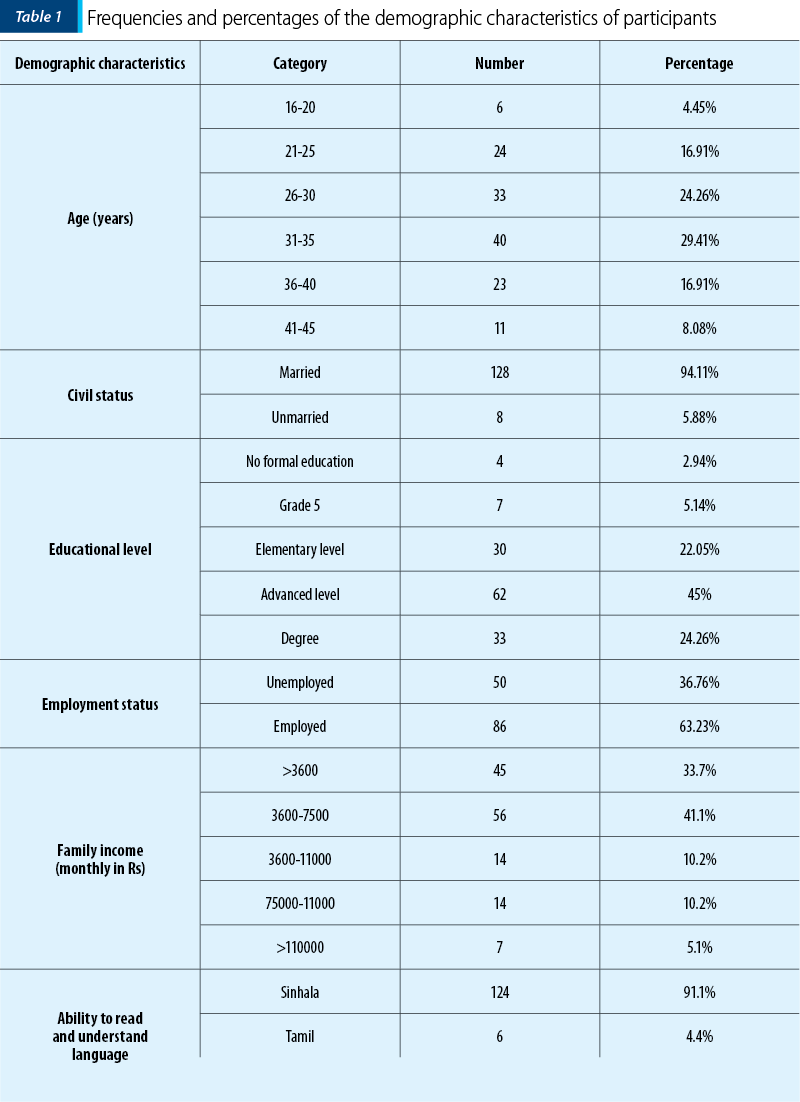
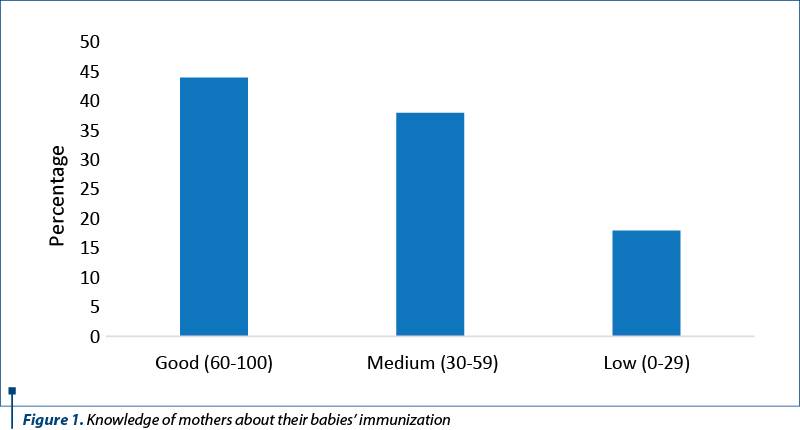
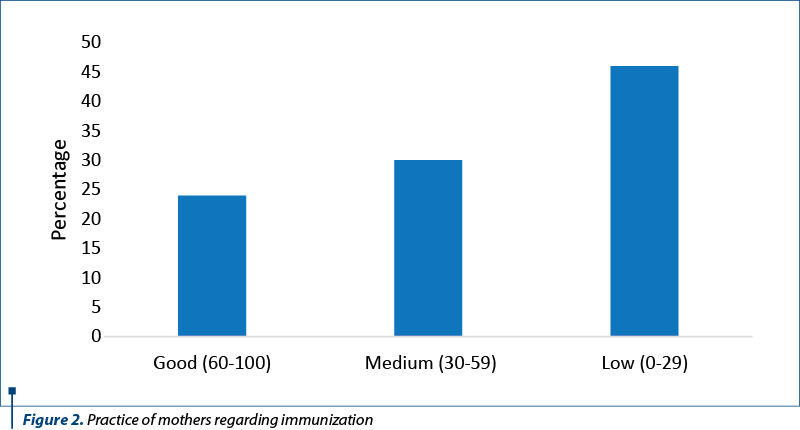
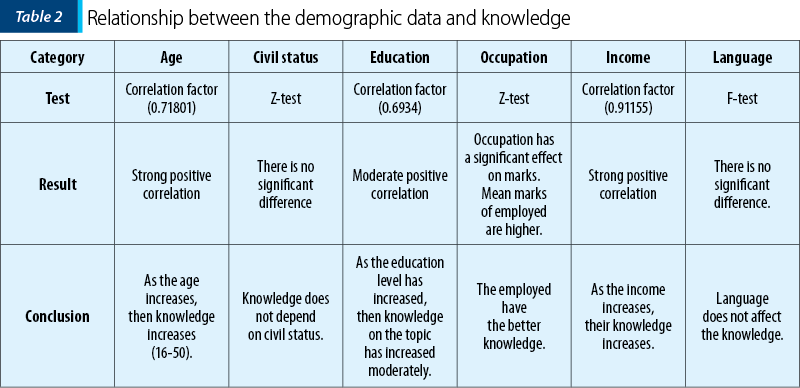
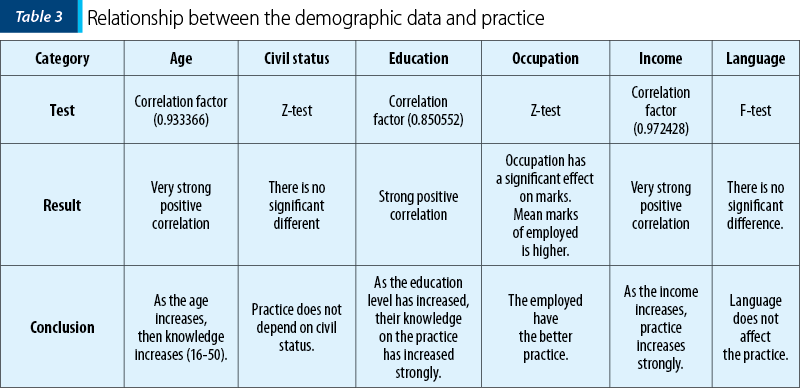

Conflict of interest: none declared
Financial support: none declared
This work is permanently accessible online free of charge and published under the CC-BY
Bibliografie
- Ali M, Hossain A. What is the extent of COVID-19 vaccine hesitancy in Bangladesh? A cross-sectional rapid national survey. BMJ Open. 2021;11(8):e050303.
- Burroway R, Hargrove A. Education is the antidote: Individual- and community-level effects of maternal education on child immunizations in Nigeria. Soc Sci Med. 2018;213:63-71.
- Cleve M. The lightning-fast quest for COVID vaccines – and what it means for other diseases. Nature. 2021;589:16-8.
- Cook TM, Roberts JV. Impact of vaccination by priority group on UK deaths, hospital admissions and intensive care admissions from COVID‐19. Anaesthesia. 2021;76(5):608-616.
- Gebrecherkos T, Girmay G, Lemma M, Negash M. Knowledge, Attitude, and Practice towards Hepatitis B Virus among Pregnant Women Attending Antenatal Care at the University of Gondar Comprehensive Specialized Hospital, Northwest Ethiopia. Int J Hepatol. 2020;2020:5617603.
- Gualano MR, Olivero E, Voglino G, et al. Knowledge, attitudes and beliefs towards compulsory vaccination: a systematic review. Hum Vaccin Immunother. 2019;15(4):918-931.
- Hill HA, Yankey D, Elam-Evans LD, Singleton JA, Sterrett N. Vaccination Coverage by Age 24 Months Among Children Born in 2017 and 2018 - National Immunization Survey-Child, United States, 2018-2020. MMWR Morb Mortal Wkly Rep. 2021;70(41):1435-1440.
- Hotez P. America and Europe’s new normal: the return of vaccine-preventable diseases. Pediatric Research. 2019;85(7):912-914.
- Neufeind J, Betsch C, Habersaat KB, Eckardt M, Schmid P, Wichmann O. Barriers and drivers to adult vaccination among family physicians – Insights for tailoring the immunization program in Germany. Vaccine. 2020;38(27):4252-4262.
- Piot P, Larson HJ, O’Brien KL, et al. Immunization: vital progress, unfinished agenda. Nature. 2019;575(7781):119-129.
- Rosso A, Massimi A, De Vito C, et al. Knowledge and attitudes on pediatric vaccinations and intention to vaccinate in a sample of pregnant women from the City of Rome. Vaccine. 2019;37(14):1954-1963.
- Siani A. Measles outbreaks in Italy: A paradigm of the re-emergence of vaccine-preventable diseases in developed countries. Prev Med. 2019;121:99-104.
- Verulava T, Jaiani M, Lordkipanidze A, Jorbenadze R, Dangadze B. Mothers’ knowledge and attitudes towards child immunization in Georgia. The Open Public Health Journal. 2019;12(1):232-237.




